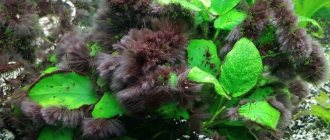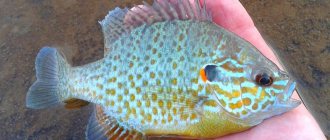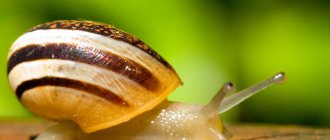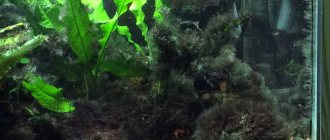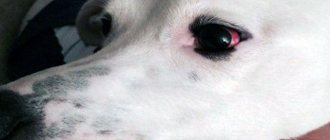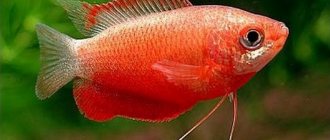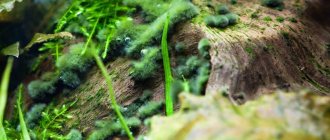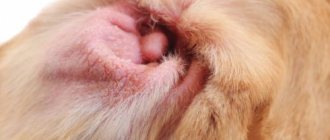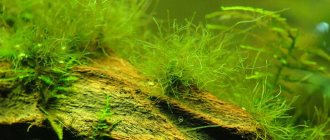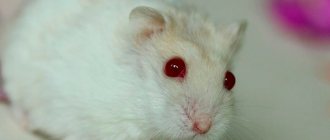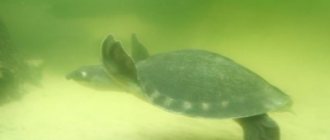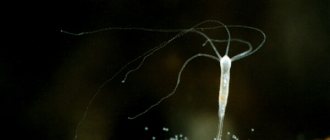The wide diversity of the flora of planet Earth delights and fascinates biologists. Plants provide home and food for representatives of the animal world, and are also used by humans in many areas. Living organisms of the deep sea, in particular algae, do not stand aside either. Red algae, which are actively used in medicine, industry and agriculture, are of particular value due to their unique properties.
Red algae are actively used in medicine, industry and agriculture
Description and distinctive features
The body of multicellular red algae, purple algae, an ancient group of plants, consists of a long dissected thallus, similar in structure to the stem and leaves. The length of some bushy and leafy representatives reaches 2 m. 95% of such large plants live in the sea, the rest live in fresh water bodies, attached by rhizoids.
Along with large ones, scarlet beetles come in unicellular (bapgiaceae), filamentous (Porphyra) and lamellar forms.
Among red algae there are many parasites that settle on the bodies of relatives.
In nature, they are found in pink, red, crimson, bluish, and even black colors due to a special auxiliary pigment. This dye of red algae is contained in small chromatophores of the delicate and fragile body along with chlorophyll.
Red algae pigments:
- phycoerythrins give red and orange colors;
- phycobilins – blue;
- Carotenoids are yellow pigments.
Strongly absorbing sunlight, they are able to survive at great depths (100-200 m), storing purple starch.
Possible dangers from consumption
You cannot rely only on the beneficial properties of any type of scarlet. Mistakes in use will cause serious harm to health. What dangers await lovers of original cuisine:
- Nutrient overdose. This is possible when using the species for the first time or when abusing algae. The body accepts a certain amount of nutrients, and if the norm is violated, health problems can occur. For example, potassium. Oversaturation with the element causes rapid heartbeat or kidney problems.
- Excess iodine. The element is necessary for the functioning of the thyroid gland. But excesses disrupt the production of hormones, which is dangerous for the body.
- Sources of origin and sale of the product. Polluted water bodies harm inhabitants, including red ones, and manufacturers violate cooking technologies. Therefore, the product is purchased in a specialized store with a good reputation.
But the risks of serious complications are small. It all depends on the freshness of the product, the quality of processing and the rate of consumption.
Attention. Nursing mothers, pregnant women, people with serious stomach diseases, polyvalent allergies, iodine intolerance should consume algae products with caution.
Life cycle and reproduction
The colorful Caño Cristales River
The studied life cycles of red algae are complex and not similar to other groups of these plants. The presence of one multicellular stage is required, and all stages are without motile flagellar cells.
In the life of most of these plants, during sexual reproduction, 3 generations change:
- A haploid gametophyte is an independent haploid plant with gametangia: egg-shaped carpogonal cells with carpospores and spermatangia for the production of sperm.
- Diploid carposporophyte is an auxiliary cell that contains double carpospores. Here, the fertilized carpogonium cell, using a long thread, placed the nucleus, where division began.
- The diploid sporophyte is represented by passively floating carpospores, which, when settling, become tetrasporophytes, similar to ordinary sporophytes.
Asexual reproduction involves immobile, flagellated spores. Bagniaceae and Floridaea classes of the red algae division reproduce vegetatively.
Popular message topics
- Coal industry
An industry that includes open-pit mining, processing and enrichment of both brown and hard coal (briquetting) - this is the coal industry. - Gerbera Flower
Many have never even heard of this flower, and this is normal. Because it can be confused with others and not see its zest and uniqueness through which it stands out from others. - Pollution of the lithosphere
It should be noted that the main cause of pollution of the lithosphere is human economic activity. The soil is most at risk, and this is quite unfortunate, because the life of all living organisms depends on its fertility:
Role in nature
Photosynthetic plants, scarlet plants, are among the primary producers of the sea ecosystem. In addition, invertebrate and vertebrate animals feed on algae. Coralline red algae are the basis of coral reefs.
With the help of these algae, sea water is checked for contamination with radioactive and other harmful substances. These substances accumulate in the bodies of algae.
Small bodies of water can clean themselves thanks to red algae.
Scarlet cells contain polyhydric alcohols with low molecular weight carbon. Some species contain inclusions of magnesium and calcium carbonate in their cell walls. The inner cellulose layer of cells and the outer amorphous layer contain the substance agar.
They are raw materials for biofuel
Scientists have found that these plants have a very high decomposition rate. This makes them one of the best biomass fuels . Developments are currently underway regarding the best way to obtain this biofuel.
Options with high temperature or high pressure are being considered. It is believed that this project is very promising, and in the future, fuel obtained from algae will be able to compete with gasoline or diesel fuel. However, scientists are separated from this hour by numerous experiments and experiments.
Application
Interesting facts about red algae and their importance in human life:
thanks to vitamins and minerals, medicines are made from scarlet flowers; cosmetic preparations against skin aging are made from phyllophora;
- using medicine from red algae they fight the immunodeficiency virus;
- Chondrus extract, a red algae from the North Sea, heals the respiratory tract;
- Russian biologists are developing the scientific basis to use the Black Sea for the cultivation of red algae.
The importance of red algae, which provide more biomass than land plants, is difficult to overestimate. The food industry and microbiology produce plant agar-agar jelly. In many countries, porphyra and gracilaria are added to healthy menus as gourmet dishes. Red algae is a source of iodine, bromine and potassium salt. By dry distillation, resin, coal and acetone with methyl alcohol are obtained. Algae is used to feed livestock and fertilize fields; sapropel mud with scarlet grass is used for treatment.
Beneficial features
Due to the content of a large volume of chemical elements, red algae stand out from many other marine species with unique properties.
What are the benefits of the included ingredients:
- Vitamin D maintains the balance of phosphorus and calcium, which are involved in the development of bone tissue. If your balance is impaired, there is a risk of progression to osteoporosis.
- Potassium is directly involved in the regulation of water and acid balances, helps in conducting nerve impulses and regulating intracranial pressure.
- Magnesium is a participant in energy metabolism and protein synthesis. Maintains the balance of sodium, calcium and potassium. Deficiency provokes hypertension, heart disease, and blood vessel disease.
- Calcium stabilizes the functioning of the heart muscle and helps in the fight against high cholesterol. The deficiency primarily negatively affects the condition of bones, teeth, and spine.
- Sodium normalizes water-salt metabolism, participates in maintaining the acid-base balance, has vasodilating properties, and activates the production of pancreatic enzymes.
Florida contains vitamin B12 and A, iodine, iron, phosphorus, which also have a positive effect on the functioning of organs.
Effects of algae on the human body:
- antiviral;
- antibacterial;
- anti-inflammatory;
- immunomodulatory;
- antimicrobial;
- antifungal.
Additional Information. Scientists have proven that red algae stops the rapid development of AIDS as a result of the sulfated carbohydrates they contain.
Red algae in the seas of Russia
The habitats of scarlet moths are the coastal strip of the sea and the depths, rarely in fresh water. Russian seas contain more than 400 species of red algae.
Barents Sea - scarlet fish form coastal benthic vegetation with other representatives of aquatic flora. Porphyra umbilicala grows on steep rocks; lower down are littoral purple grasses, which are also found on the coast of Murmansk. Calcareous coralline and other algae live in the depths of the water.
White Sea - no deeper than 5 m there are many fucus trees, there are thickets of ahnfeltia, which break off and float in the bays in large layers.
Algae Anfeltia
Black Sea - has a reserve called the Small Phyllophora Field, located northwest of Crimea.
Chemical composition
Representatives of red algae contain from 13-23% dry matter, which includes mineral and nitrogen compounds, polysaccharides, and fiber. Calorie content is only 25 g per 100 g of substance. The content of proteins, fats, carbohydrates is respectively 1.5; 0.0; 0.5 V
| Nutritional value of the species per 100 g | ||||
| Titles | Squirrels | Fats | Carbohydrates | Calorie content |
| Quantity | 1.5 g | 0 g | 0.5 g | 25 g |
The chemical composition of each type of algae depends on the age, time of collection, and region of residence.
| Chemical composition of the species | ||||
| Vitamins | Macronutrients | |||
| D (calciferol) | Potassium K | Magnesium Mg | Calcium Ca | Sodium Na |
| 250% | 40% | 10% | 20% | 10% |
Additional Information. Even such a nutritious product as sea kale contains only 17% potassium per 100 g.
The concentration of nitrogen-containing substances in different types of organisms is 1.2-36.8%. The maximum amount of nitrogen occurs in winter and early spring; in summer the levels decrease.
The mass of lipids ranges between 2.6 and 39.4 mg/g. Different types contain approximately the same amount of fat.
Classification
The department Red algae belongs to the subkingdom Biliphyta, and consists of a single class - Rhodophyta (purple), formed by two subclasses Floridoficida and Bangiophyticida. This is a large group of algae, represented by 400 genera and 3900 species.
Class Banguiaceae
These include the freshwater and marine filamentous Bangia and the leaf-shaped Porphyra.
Porphyra consists of a body similar to a 2-layer plate, which tapers at the bottom like a stalk, then there is a sole and rhizoids. The life cycle of porphyry begins with carpogons, and continues in the calcareous shell of a bivalve mollusk. The sporophyte develops here.
Porphyra is edible, green and black (“nori”) are used in preparing sushi.
Florida class:
These algae already have a complex thallus, which consists of branched threads, and apical growth. There are no unicellular forms, as well as division into tissues.
Batrachospermum is a freshwater algae, also called frogweed. Prefers fast water and clear streams. The length of the filamentous gametophyte Batrachospermum is 40 cm.
Subclass Hildenbrandiaceae
Consists of one family with 8 genera. Reproduction is sexual and asexual. The bodies of the gametophyte and sporophyte do not differ only when the reproductive organs are considered. Multinucleate cells contain lamellar chloroplasts, but lack pyrenoids. The subclass is distinguished by the appearance of a special nourishing tissue made of numerous small-celled filaments.
Subclass non-maliophicidal
Belongs to a primitive group of red algae that live in fresh water. Plants without auxillary cells and also without feeding cells. The filaments of the gonimoblast begin with a fertilized carpogon or an underlying cell with a nucleus that has passed into it.
Subclass Ahnfelciaceae
Includes 10 species inhabiting the cold northern Pacific, Atlantic and some regions in the Arctic Ocean. High-quality agar-agar is extracted from these algae. There are unattached thalli that reproduce vegetatively. Attached anfelcia is capable of reproducing sexually.
Anfeltia equinoxum is considered a rare species and is protected by law.
Subclass rodeniophycidaceae
The order is clearly demarcated and occupies a separate place in the taxonomy of the class. Difference: there is no division into auxillary and carpogonal branches - it is a single whole. Rhodomenium algae prefer warm habitats, but are also found far in the North.
Red algae in home aquariums
Aquadesign is becoming a popular trend in aquarium maintenance. The role of the basic element in the aquarium decor was given to red algae, with which the water container looks elegant and resembles hot countries. In order for the scarlet to fit in and not disturb the fragile ecosystem, it needs to create special conditions and careful care. Otherwise, the algae will manifest itself as a real “ideal parasite.”
Reasons for appearance
It is almost impossible to prevent red algae spores from getting into the aquarium. They settle on plants and thus “move” to a new place of residence. They attach to fish, decorations, and even end up in fish food. Some then grow small and invisible, while others grow to occupy the entire area of the aquarium.
Conditions for the rapid development of purple flowers:
- oversaturation of the container with nutrients (organics);
- poorly filtered water, rarely cleaned aquarium and irregular water changes;
- there is too much water flow inside;
- carbon dioxide in insufficient quantities;
- the length of daylight is exaggerated, and the lighting is too powerful.
As a result, the biological balance is disrupted and a source of food appears for the “red devils,” which instantly grow. After the errors are corrected, the balance will be restored and the scarlets will disappear. Sometimes herbivorous fish and shellfish help.
They don't have roots, but some use a "sole"
All plants need roots to absorb nutrients from the ground. However, this system is completely absent in algae.
They do not have roots, because they easily absorb nutrients from the environment throughout their entire surface. However, the roots still help the plants stay in one place.
If the algae do not have them, a logical question arises as to how some of them are attached to the bottom. These types have a separate special organ, which scientists called the “sole . It looks like a flattened extension at the base.
